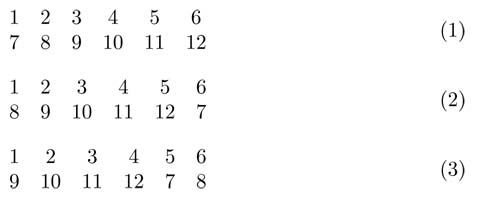| |||
| Math Central | Quandaries & Queries |
|
Question from Roland: We have a golf tournament, 12 players, three rounds. We want to pair so that we have pairings with as few duplications as possible. |
Hi Roland,
There is actually 161 ways you could pair golfers for a single round of golf. A combination is a group chosen from a set (or larger group) where the order of when the individual members of group does not matter. A permutation is a group chosen where the order does matter. For example: How many ways can 1st, 2nd and 3rd place in a race be awarded from a group of 10 runners? Since for pairings in a golf tournament order does not matter, so I will use combinations. (For example: Player 1 vs Player 12 is the same as Player 12 vs Player 1).
For the first pair, you choose 2 golfers from a group of 12. For the next pair, you choose 2 golfers from a group of 10 (because 2 are already in a pair). The next pair, you choose 2 golfers from a group of 8... you get the idea. Add all the combinations together for the total number of combinations.
![]()
For more information on combinations check out http://mathcentral.uregina.ca/QQ/database/QQ.09.07/h/marcus1.html
The easiest way to create pairs for 3 rounds of golf is create two rows, numbers 1-6 on the top row and 7-12 on the bottom row. Keep the top row fixed and rotate the bottom row one to the left for each round. Using this method you could add up to 3 more rounds of golf.

For a more complicated golf tournament structure with groups of 4 check out: http://mathcentral.uregina.ca/QQ/database/QQ.09.07/h/john7.html
Janice
 |
||
Math Central is supported by the University of Regina and The Pacific Institute for the Mathematical Sciences.